With nearly 200 species and over 800 cultivars, it would be next to impossible to address all the different types of pine trees. The largest member of the conifer family, pine trees are iconic and evergreen and found around the world in various capacities. But what might some of the most popular types of pine trees be, and how can you learn how to distinguish different pine tree types?
Typically divided into two subgenuses, here’s how to find a pine tree that works well in your landscaping or backyard!
Types of Pine Trees: Yellow vs. White
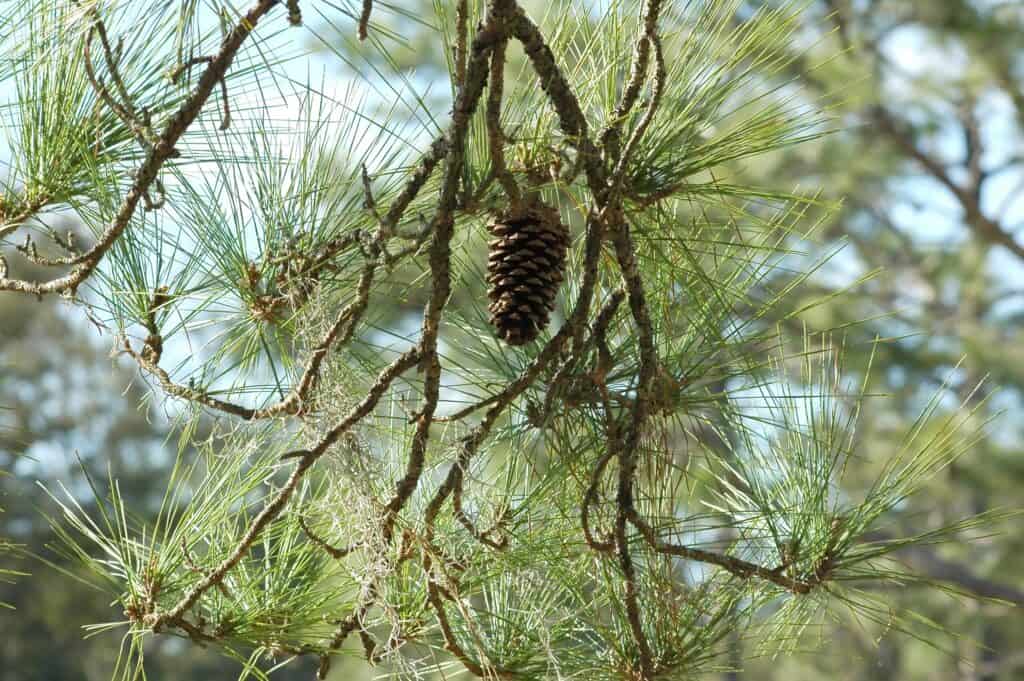
Fort McClellan Army base in what is now the Mountain Longleaf National Wildlife Refuge. The Refuge comprises over 7000 acres of forests, hills, and mountains.
©Stacey Lynn Payne/Shutterstock.com
While there are many different schools of thought on how to classify pine trees, most people separate them based on the overall strength of their wood. Known as the Pinus subg. Pinus and Pinus subg. Strobus, respectively, here are some key characteristics of the two primary pine groups.
Yellow or Hard Pine Trees
The larger subgenus of pine trees, hard pines are also colloquially referred to as yellow pines. These trees have incredibly hard wood and can also be identified by their smaller needle clusters.
White or Soft Pine Trees
A much smaller subgenus compared to hard pines, soft pines have more needles per needle cluster on their branches. These pines are also known as white pine trees.
The Most Common and Popular Types of Pine Trees
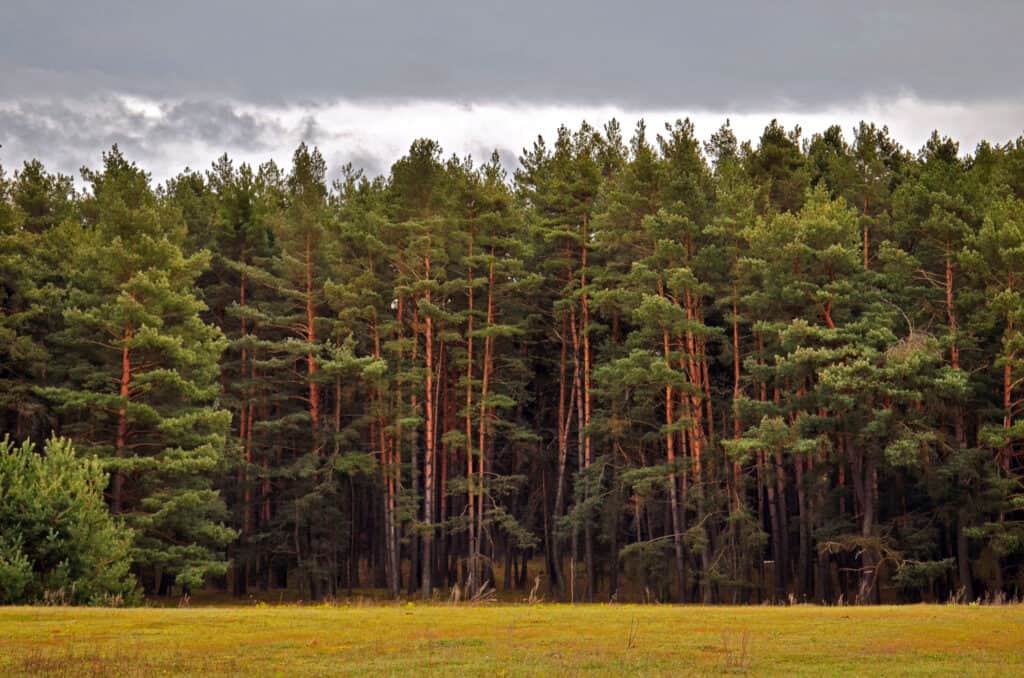
Categorized into a few subspecies, there are nearly 1,000 pine tree cultivars.
©Ghiuz/Shutterstock.com
Long-lived and beautiful, pine trees make a great addition to any landscaping project. Just know that these trees can indeed live hundreds of years, and the longest-living thing on planet earth is technically a type of pine tree!
Let’s talk about some of the most popular and common types of pines now.
Sugar Pine
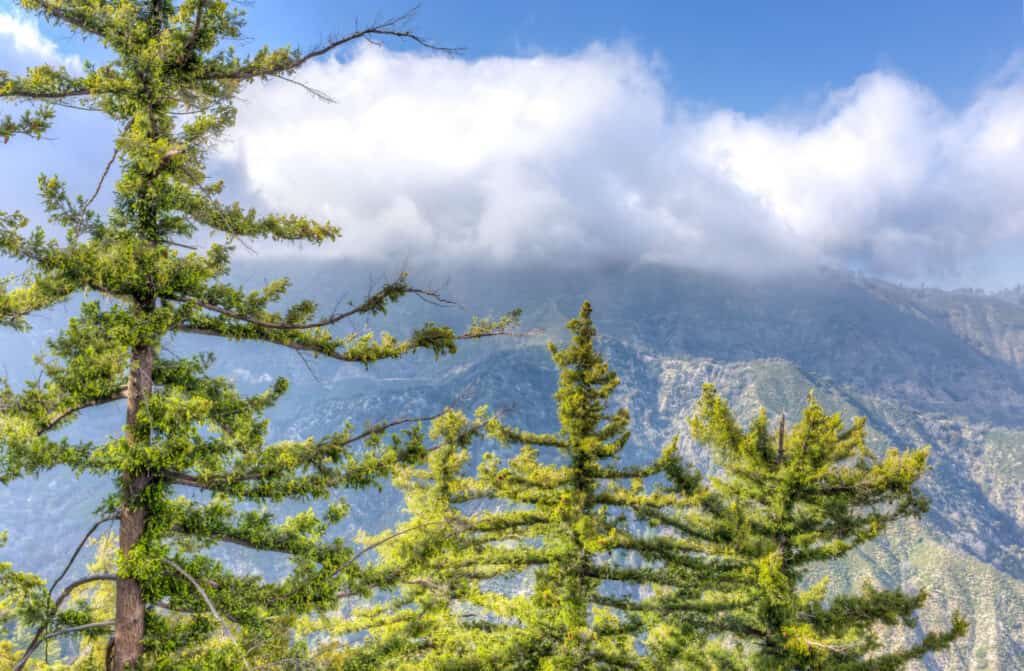
Reaching up to 200 feet tall, sugar pines produce the largest cones of any pine tree.
©Ken Wolter/Shutterstock.com
Classifed as Pinus lambertiana and a member of the white pine family, sugar pines are the tallest and thickest pine trees out there. It also produces the longest pine cones of any other tree, though not necessarily the weightiest. This gentle giant is native to the Pacific Northwest and California.
Red Pine
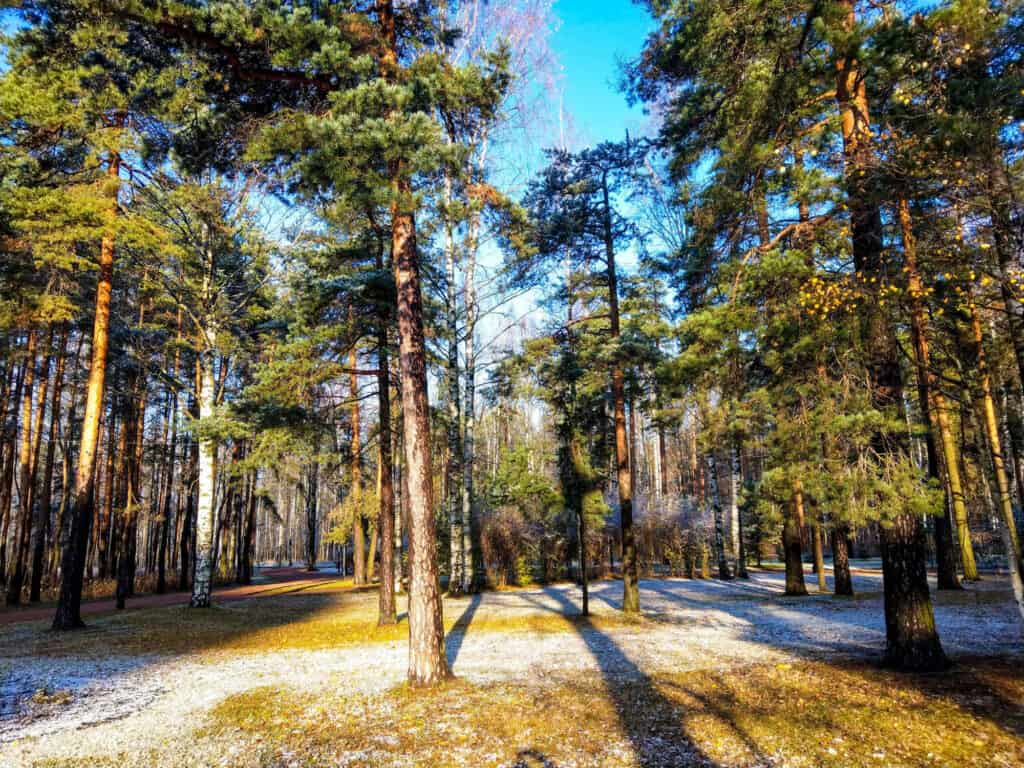
Some studies suggest that red pines very nearly went extinct at some point in their history.
©Lyudmila2509/Shutterstock.com
Found on the other side of North America, red pine trees are native to the east coast and Canada. These trees reach an average of 100 feet tall and some studies suggest that this particular pine tree species almost went extinct based on its genetic code.
Jack Pine

Most of the cones found on jack pine trees curve inward.
©Erik Agar/Shutterstock.com
Jack pines are a smaller variety of pine tree, often growing into strange shapes based on soil content and local weather. The cones of this particular pine tree also grow differently than others, often curving inward toward the trunk. It is native to the Eastern United States and Canada and is classified as Pinus banksiana.
Shortleaf Pine

Valued for timber, shortleaf pines are named after the latin word for hedgehogs.
©Formatoriginal/Shutterstock.com
A yellow pine named after the Latin word for “hedgehog“, shortleaf pine trees are classified as Pinus echinata. It thrives in a variety of conditions in the Southern United States and is widely produced for timber. It reaches an average of 75 feet tall and its needles are very distinct.
Longleaf Pine

Fire resistant and ornamental, longleaf pines are the state tree of Alabama.
©Danita Delimont/Shutterstock.com
The official state tree of Alabama, longleaf pines, is different from shortleaf pines in a variety of ways. For example, the needles found on longleaf pines are much longer and these trees grow taller overall. Plus, longleaf pines have tough and scaly bark that is very fire resistant.
Scots Pine
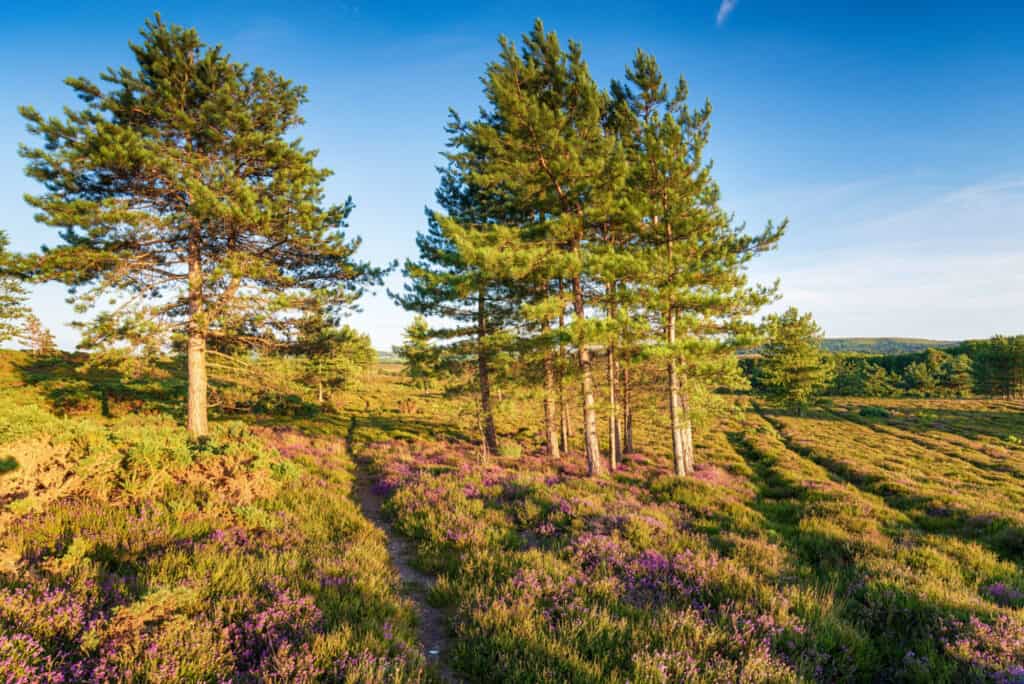
Native to Europe, Scots pines are also known as Scotch pine trees.
©Helen Hotson/Shutterstock.com
Classified as Pinus sylvestris, the Scots or Scotch pine tree is an ideal ornamental pine for a number of reasons. It was one of the most popular Christmas tree varieties a few decades back, and it is one of the few pine trees native to northernmost Europe. Plus, its striking blue-green needles and red bark make a great addition to any landscaping.
Turkish Pine
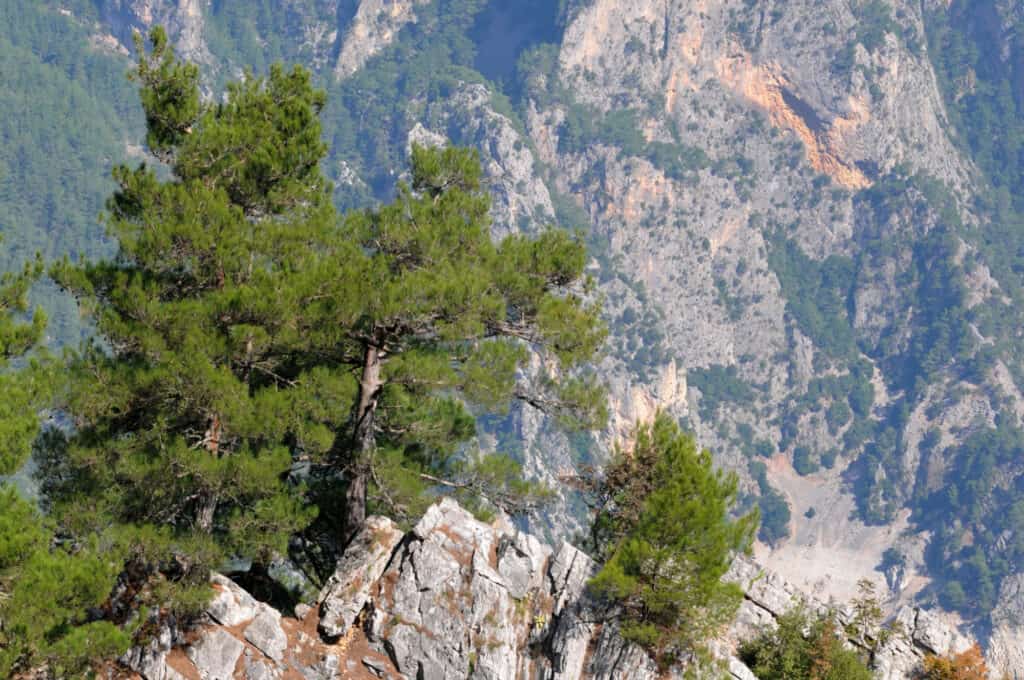
Native to the Mediterranean, Turkish pines thrive in arid conditions.
©zcebeci/Shutterstock.com
As its name implies, the Turkish pine is a yellow pine native to Turkey and is a great choice for those of you living in hotter or drier climates. This pine tree thrives in the heat given its native Mediterranean habitat, and it is an extremely popular ornamental pine tree variety.
Virginia Pine

Belonging to the yellow pine subgenus, Virginia pines have hard wood.
©Nikolay Kurzenko/Shutterstock.com
A yellow pine that gets harder as it ages, the Virginia pine is native to the southernmost United States. It is not a particularly long-lived pine tree compared to other varieties. However, it does have a haphazard appearance and yellowish needles in the wintertime, despite it being an evergreen tree.
Western White Pine

The cones found on western white pine trees are slender.
©Sunshine Haven Photo/Shutterstock.com
Known by many other names, the Western white pine is native to the west coast of the United States and is the official state tree of Idaho. A popular ornamental variety, Western white pines thrive in higher altitudes and can reach up to 200 feet tall. It is also known as the silver pine and can be classified as Pinus monticola.
Eastern White Pine

Reaching up to 180 feet tall, eastern white pines are popular worldwide.
©Ukrolenochka/Shutterstock.com
Similarly to Western white pines, eastern white pines are extremely popular when used as ornamental trees. In its history, eastern white pines were once used for the masts of ships. Therefore, they are revered in the northeastern United States for this reason among many others, including lumber production.
Lodgepole Pine
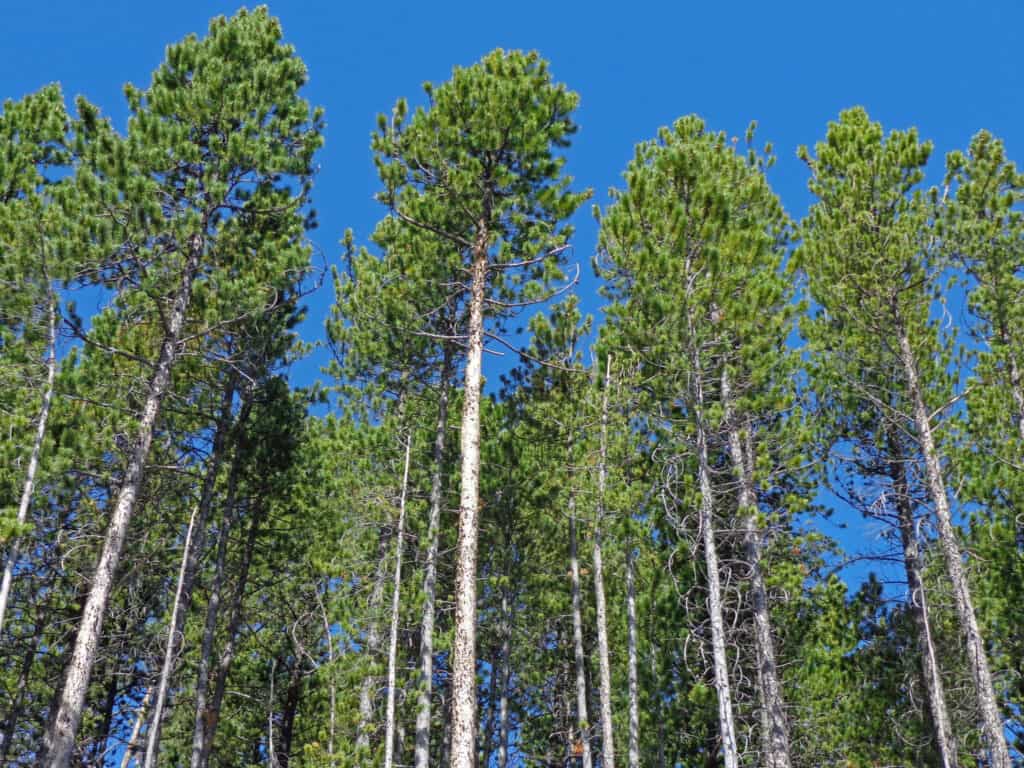
The lodgepole pine or Pinus contorta is one of the most common pine trees in North America.
©Sara Kendall/Shutterstock.com
Preferring dry soil and weather conditions, the lodgepole pine or Pinus contorta is one of the most common pine trees in North America. It is widely spread throughout Canada and along the west coast of the United States. Additionally, it has a few different subspecies and cultivars associated with its scientific classification.
Pitch Pine
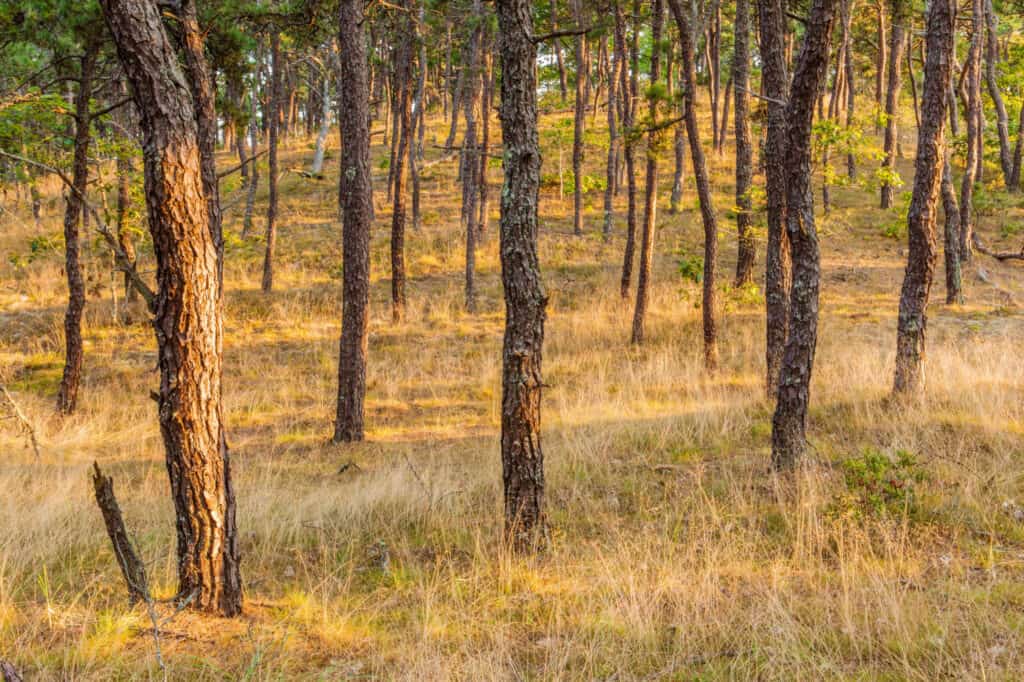
The average pitch pine grows an irregular trunk.
©Danita Delimont/Shutterstock.com
A hard pine that relatively rarely reaches over 80 feet tall, the pitch pine was once widely valued and distributed for pitch production. However, this tree grows in an irregular manner, making it difficult to harvest or use for timber production. It makes a great ornamental tree in a variety of climates, considering it thrives in soil with poor nutrition.
Maritime Pine

Maritime pines are invasive in South
Africa
.
©StevanZZ/Shutterstock.com
Once native to Europe and the Mediterranean, maritime pine trees are widely spread throughout the world nowadays. In fact, this particular pine tree is an invasive species in South Africa. It is a popular ornamental tree elsewhere in the world given its ability to thrive in temperate climates. It is scientifically classified as Pinus pinaster.
Sand Pine
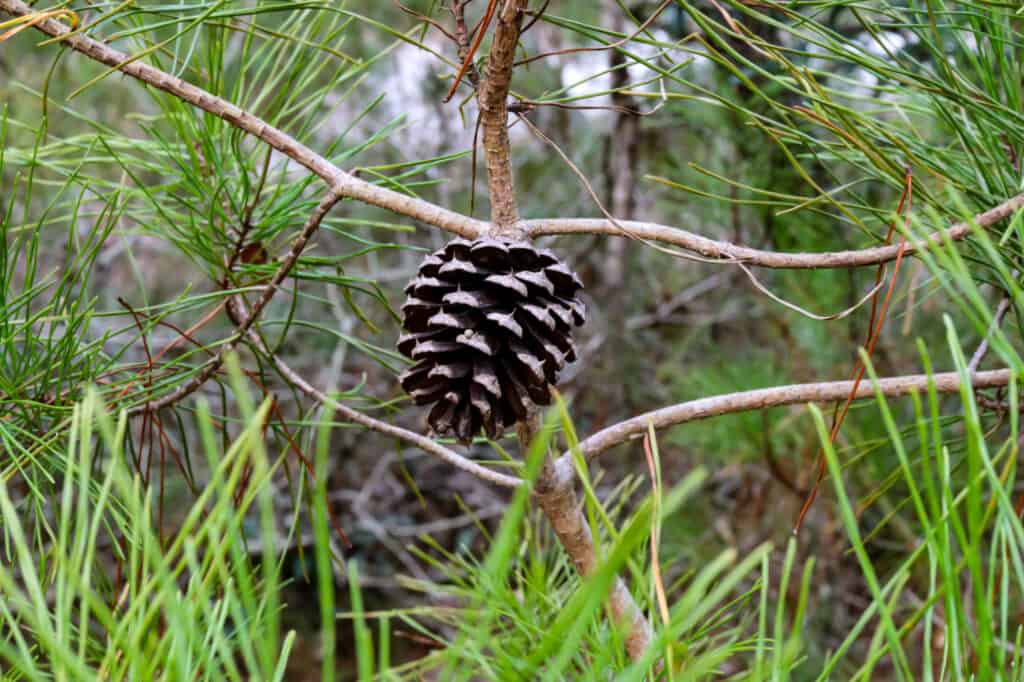
Native to Florida, sand pines thrive where other pines do not.
©John_P_Anderson/Shutterstock.com
As its name suggests, the sand pine is one of the few pine trees that grow well in sandy soil. It is native to very specific regions of Florida and Alabama, thriving in locations where most canopy trees do not. This makes it a very important tree for a variety of endangered animal species in that location.
Slash Pine
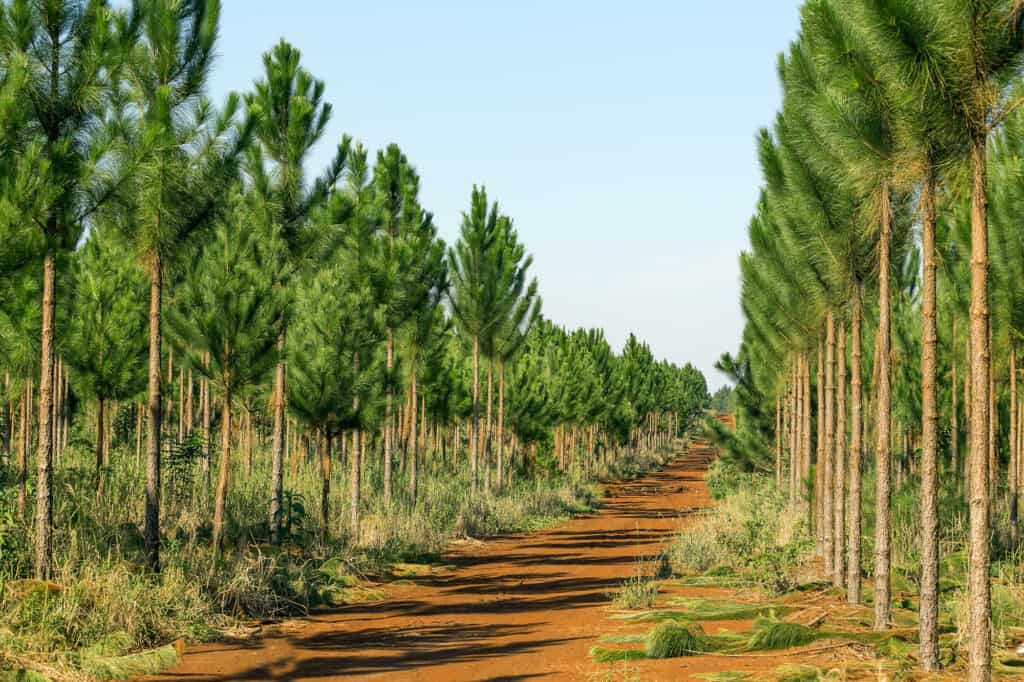
Slash pines can grow in swampy conditions.
©Pablo Rodriguez Merkel/Shutterstock.com
With a few different varieties and many different names, the slash pine is one of the hardest woods available, particularly of any other pine species. It grows in swampy regions with other tree and shrub species and is native to the southern United States. The swamp pine is just another name for it, and it has a uniquely dark bark color.
Ponderosa Pine
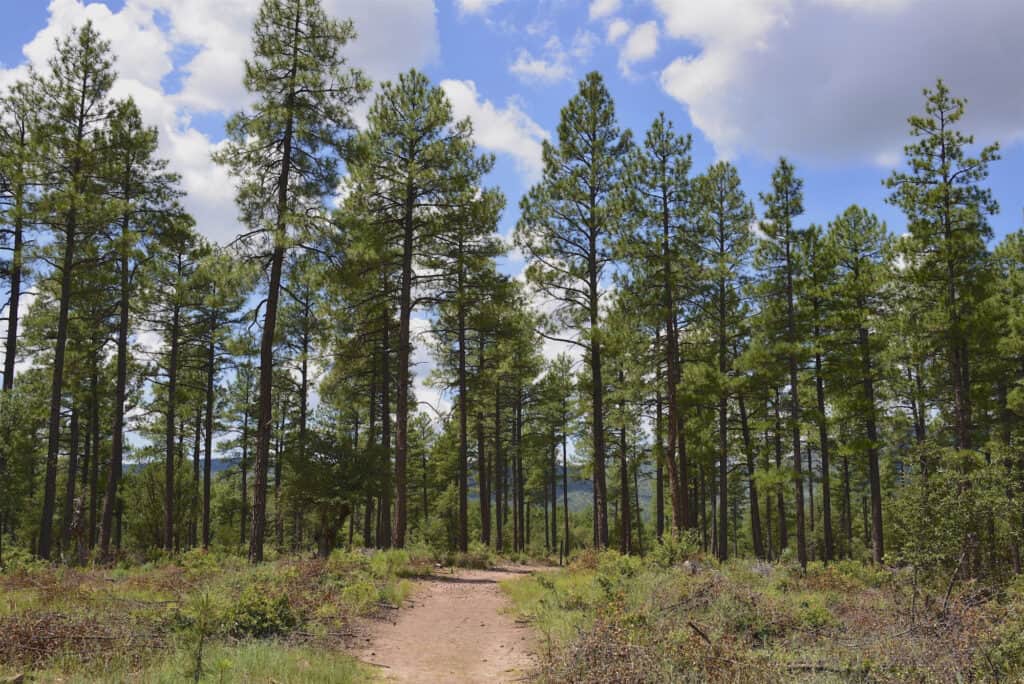
Widely distributed, ponderosa pines are some of the tallest pines around.
©SED Travel Photography/Shutterstock.com
The ponderosa pine tree is native to the westernmost United States. It is considered to be the most widely distributed pine tree in North America. It produces some of the tallest pines in the world and also makes a great bonsai tree because of its shaggy, red bark. This also makes it a great ornamental tree in the average backyard, so long as your climate is cold enough.
Loblolly Pine
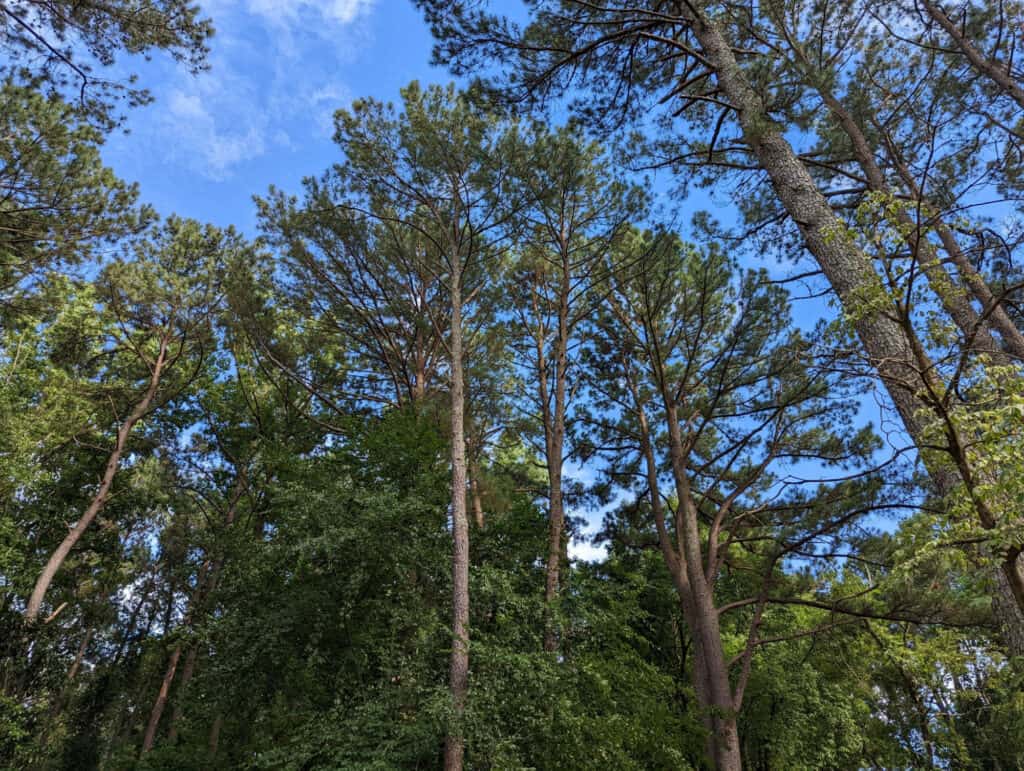
Loblolly pines are the second most common tree in the US.
©Sierra Tango/Shutterstock.com
Besides red maple trees, the loblolly pine is the most common tree in the United States. Classified as Pinus taeda, loblolly pines have exceedingly upright and straight trunks and are considered one of the tallest pines native to the southernmost United States. They are named after mud pits or swampy holes, given that this tree thrives in locations that offer this. Additionally, the loblolly pine once held the record for the largest genome sequence but was displaced by the unique axolotl.
Bristlecone Pine
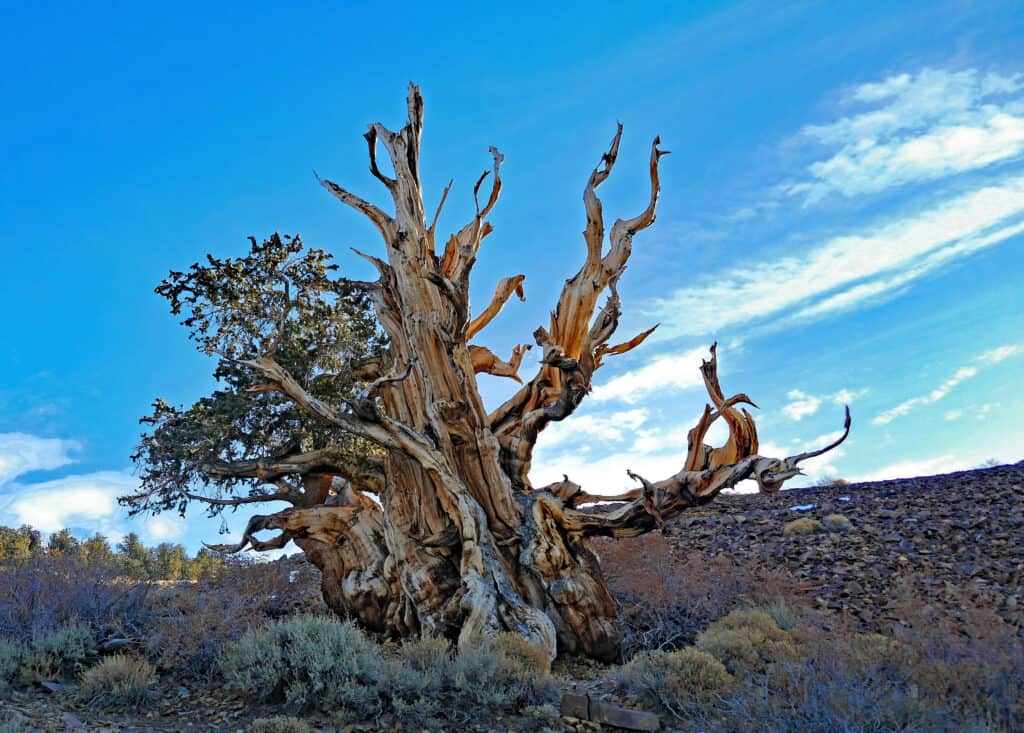
The ancient bristlecone pine tree known as Methuselah grows extremely slowly.
©dlhca/Shutterstock.com
Gnarled and revered, bristlecone pine trees are some of the longest-living trees on this planet, as well as being some of the longest-living things, period. Growing only at higher elevations in the Western United States, bristlecone pine trees have a few different varieties with distinctly twisted trunks and branches.
You can read all about the oldest bristlecone pine tree here, as it is very nearly 5000 years old!
Austrian Pine
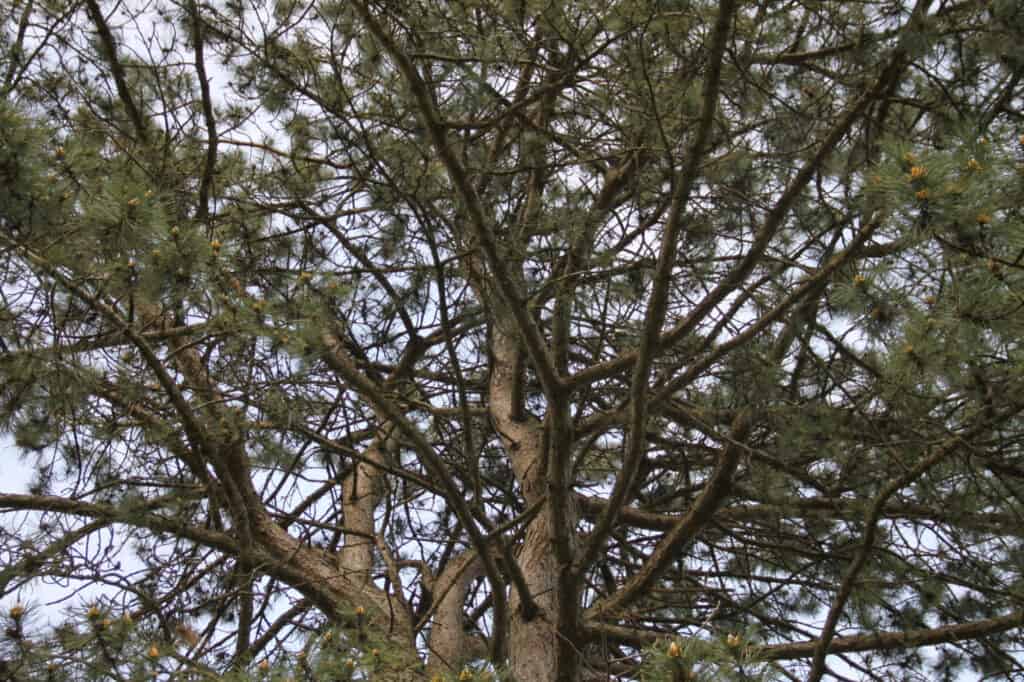
The average Austrian pine is incredibly drought resistant.
©ESTELLE R/Shutterstock.com
Native to the Mediterranean but planted ornamentally around the world, the Austrian pine is also known as the black pine tree. Frequently reaching over 100 feet tall, the Austrian pine is highly resistant to drought, pollution, and many diseases, making it a popular landscaping tree in cities as well.
Japanese Black Pine
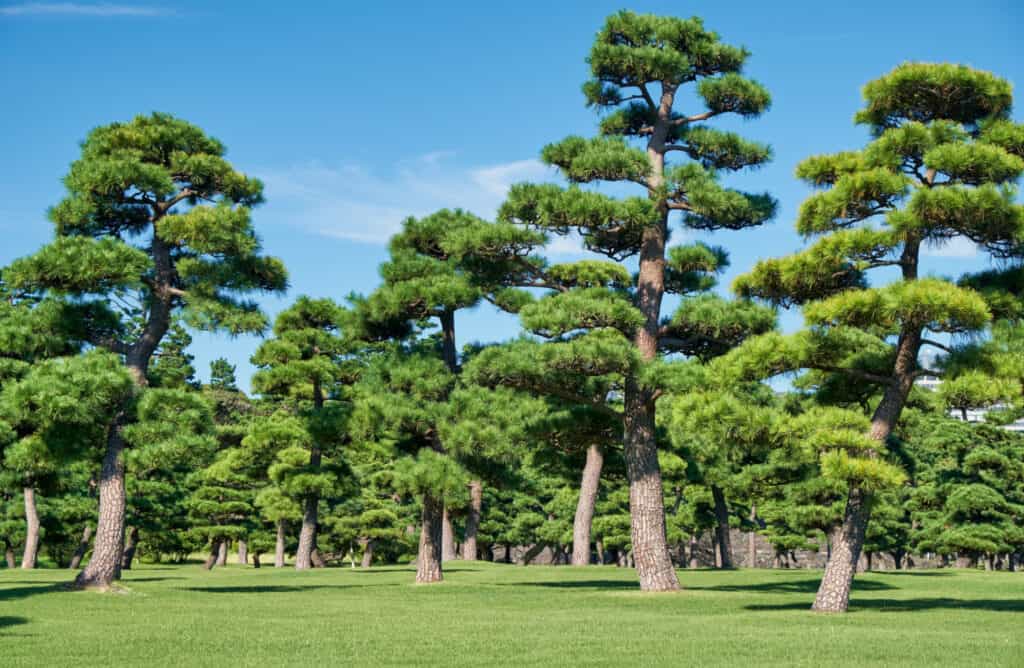
Japanese black pine trees are shaped with great patience.
©Serg Zastavkin/Shutterstock.com
Native to Japan and South Korea, the Japanese black pine is also simply known as a black pine or Japanese pine, depending on who you talk to. This is a common and revered bonsai tree variety. However, full-size cultivars are also trained in a similar way, leading to a beautiful and intricate branching habit that takes years to master.
Japanese White Pine
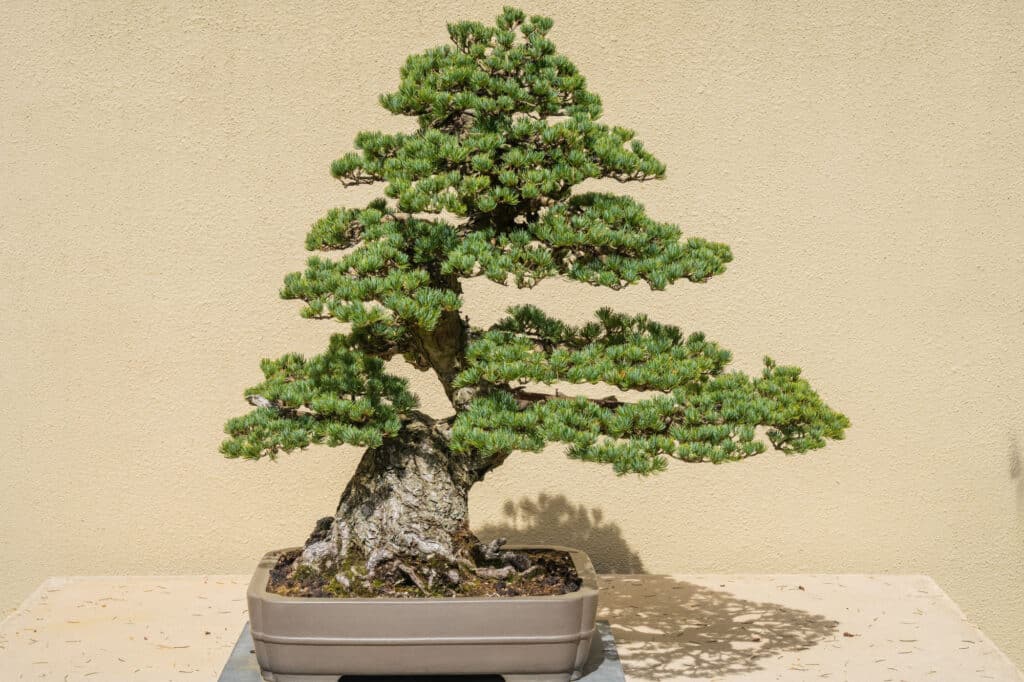
Whether large or small, Japanese white pines are gorgeous.
©Mariusz S. Jurgielewicz/Shutterstock.com
Also native to Japan and South Korea, the Japanese white pine is the sister pine to the Japanese black pine. It is also colloquially known as the five-needle pine. It makes an excellent bonsai specimen as well as an ornamental tree. Its cones grow in delicate clusters.
Lacebark Pine
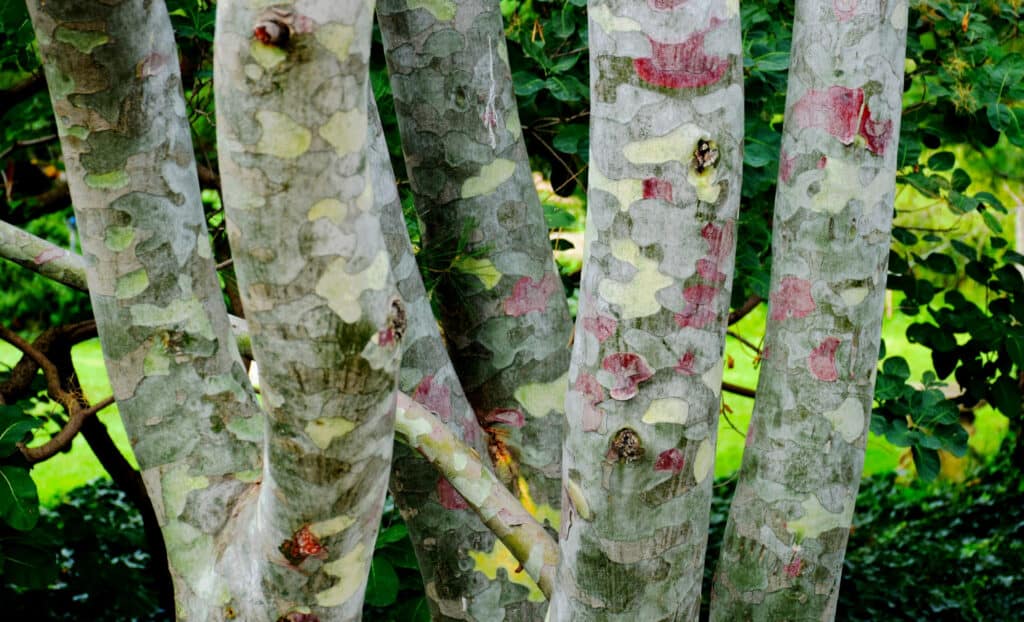
Lacebark pines are native to China.
©Blue Corner Studio/Shutterstock.com
Classified as Pinus bungeana, the lacebark pine is a very different pine tree compared to others on this list. It is slow growing and native to China, covered in unique white bark that develops more texture and patterns as it ages. In fact, the bark peels and appears metallic in color, with reds and grays streaking the white base. This tree is incredibly popular for its ornamental appeal and is extremely frost tolerant as well.
Bonus: How Do Pine Trees Benefit Animals?

Many animals benefit from eating pine cones and bark.
©Saeedatun/Shutterstock.com
Pine trees play an essential role for animals by providing food and shelter – especially during cold months. Not all birds migrate to warmer habitats – and pine trees serve as shelters for overwintering birds needing a place to escape the cold and wind. Owls like to roost in the tall branches of pines.
Stands of pines offer areas for deer to rest and eat – the canopy of pine branches reducing wind chill and catching snow to provide insulation and lessen snow on the ground – making it easier for deer to walk.
Many animals count on the pines for nourishment during harsh winter months. Deer and black bears eat the bark during lean times and woodpeckers peck into that same bark to hunt for larvae. Chipmunks and squirrels love eating the seeds of pinecones during the entire year.
The photo featured at the top of this post is © Sunshine Haven Photo/Shutterstock.com
Thank you for reading! Have some feedback for us? Contact the AZ Animals editorial team.






